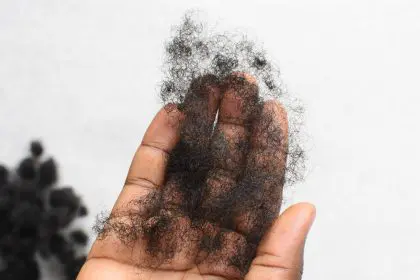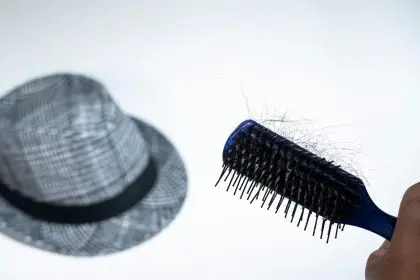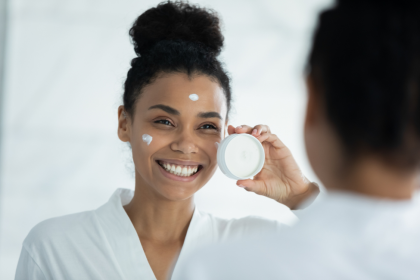A groundbreaking scientific discovery reveals that a sugar naturally produced in the human body may revolutionize hair loss treatment. Researchers have identified 2-deoxy-D-ribose (2dDR) as a powerful stimulant for hair regrowth, offering new hope to the millions affected by male pattern baldness – a condition impacting up to 50% of men worldwide.
This discovery represents a significant advancement in hair restoration science, potentially adding a powerful new option to the limited treatments currently available. Scientists from leading research institutions in the UK and Pakistan have documented how this simple sugar compound triggers multiple biological mechanisms that promote robust hair regrowth.
The limitations of current hair loss treatments
For decades, individuals experiencing hair loss have had remarkably few effective treatment options. Only two medications currently hold FDA approval for treating male pattern baldness: topical minoxidil, marketed as Rogaine, and oral finasteride, sold as Propecia. Both treatments require continuous use and deliver inconsistent results across different individuals.
These limitations have created substantial demand for alternative approaches to hair restoration. Many existing treatments focus on manipulating hormones or directly stimulating hair follicles without addressing the underlying vascular issues that often contribute to follicle miniaturization. This gap in treatment approaches has driven researchers to explore new pathways for restoring natural hair growth patterns.
How the natural sugar promotes hair follicle growth
The recently published study in Frontiers in Pharmacology details how 2-deoxy-D-ribose fundamentally differs from existing treatments. This naturally occurring sugar primarily works by stimulating angiogenesis – the formation of new blood vessels – around hair follicles. The enhanced blood supply delivers vital nutrients and oxygen to follicles, creating optimal conditions for sustained hair growth.
Tissue engineering experts involved in the research indicate that the answer to treating hair loss might be as simple as using a naturally occurring sugar to boost blood supply to hair follicles, thereby encouraging growth. This vascular-focused approach represents a paradigm shift in hair regrowth treatment methodology.
From wound healing to hair restoration discovery
The identification of 2dDR as a potential hair loss treatment emerged unexpectedly from wound healing research conducted over eight years. Scientists initially studied the sugar for its ability to promote tissue regeneration and observed that hair surrounding treated wounds consistently grew faster and thicker than in untreated areas.
This serendipitous observation prompted researchers to investigate whether the sugar could specifically target androgenetic alopecia, commonly known as male pattern baldness. The team developed sophisticated models that mimicked testosterone-driven hair loss in laboratory mice, creating conditions similar to human pattern baldness.
Impressive measurable results in laboratory testing
The application of 2dDR to these models produced remarkable results across multiple hair growth parameters. The study documented seven significant improvements in treated areas:
- Increased hair length and diameter
- Higher hair follicle density
- Improved anagen/telogen ratio indicating more active growth phases
- Larger diameter of individual hair follicles
- Expanded area of hair bulb covered with melanin
- Greater number of supporting blood vessels
- Enhanced cellular activity within follicles
These comprehensive improvements suggest the sugar compound addresses multiple aspects of the hair growth cycle simultaneously. According to research data, 2dDR demonstrated efficacy comparable to minoxidil, with both treatments showing 80-90% success rates in laboratory models.
Advantages of the natural sugar approach
Biochemistry specialists involved in the study highlight several advantages of 2dDR, the compound is naturally occurring, inexpensive, and stable, making it an attractive candidate for further exploration in treating hair loss in men.
Beyond these practical benefits, the sugar compound appears to work through biological mechanisms already present in the body, potentially reducing the risk of adverse reactions. Its stability at room temperature also suggests it could eventually be formulated into topical products that wouldn’t require special storage conditions, increasing accessibility for potential users.
Future research directions and potential applications
While early results appear promising, researchers emphasize that additional studies are necessary before 2dDR-based treatments become commercially available. Future research will likely focus on optimizing delivery methods, determining ideal concentrations, and conducting human clinical trials to confirm safety and efficacy.
Medical experts note that this approach could offer an alternative method for treating hair loss conditions, underscoring the potential significance of this discovery within the broader landscape of hair restoration treatments. If human trials produce similar results to the laboratory studies, 2dDR could eventually become an important component of combination therapies addressing multiple aspects of hair loss simultaneously.
The commercial potential for effective hair loss treatments remains substantial, with the global market expected to exceed $12 billion annually by 2026. A naturally derived treatment with demonstrated efficacy could capture significant market share while providing relief to millions affected by pattern hair loss worldwide.












